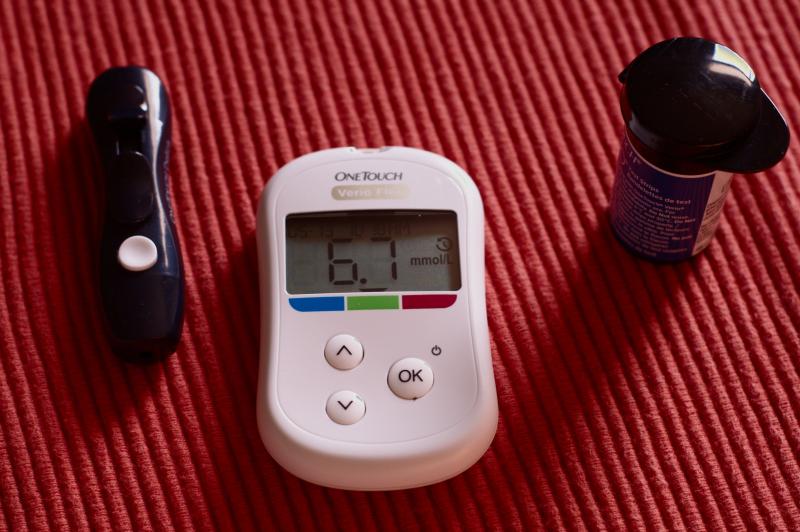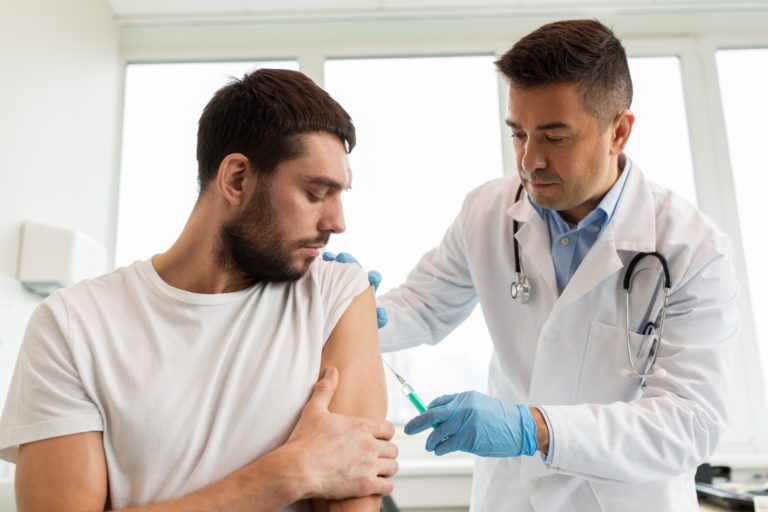Diabetes Awareness Month: The Link Between Diabetes And Your Eye Health
November is Diabetes Awareness Month and today, November 14, is Diabetes Awareness Day. This month, the health community is joining forces to raise awareness for this disease and how it’s more than just being aware of what you’re putting in your body.
Most of us associate diabetes solely with nutrition and fitness, when in fact diabetes affects many of your body’s systems and processes, including your vision. It also contributes to a higher incidence of a group of eye conditions commonly found in patients with diabetes.
Diabetic eye disease includes diabetic retinopathy (including diabetic macular edema), cataracts, and glaucoma. If not diagnosed or treated by an optometrist or ophthalmologist, these can lead to severe vision loss or even blindness.
As eye care specialists, we want to focus on the important link between diabetes and your vision so you are aware of the risk factors, conditions, and preventative measures you can take to mitigate your risk or progression of eye diseases.
BLURRY VISION
Often the blurry vision is the first sign that may lead to you believe you have an eye condition. Diabetics often struggle with high blood sugar that can cause eye swelling and blurred vision, but it isn’t necessarily a sign of severe eye disease or permanent eye damage.
Try regulating your blood sugar before meals to 70-130 mg/dL, and less than 180 mg/dL shortly after your meals. Over several months, this may correct your blurred vision. It can’t hurt to check in with our eye care specialist team while you’re doing this so we can monitor your progress.
DIABETIC RETINOPATHY & DIABETIC MACULAR EDEMA

This is the most common diabetic eye disease. Diabetic retinopathy is when chronic high blood pressure causes blood vessels in your retinas to swell and leak fluid. The deposits left by these fluids form deposits on the clear “jelly” part of your eye, creating blind spots and if not treated, can lead to blindness.
Diabetic macular edema is the buildup of fluid in the macula, the area of your retina responsible for all your “straight” vision including reading, recognizing faces, and driving. This condition affects about half of those with diabetic retinopathy.
It’s nearly impossible to see any early warning signs of these two eye conditions in ourselves. The best way to diagnose these as early as possible is through regular visits to your eye care specialists. Early detection often provides more treatment options than when it’s diagnosed after it’s progressed further.
GLAUCOMA
Glaucoma is when pressure builds up in your eye because eye fluids aren’t draining as efficiently as they should, due to nerve damage around your eyes. This pressure causes changes in your vision and is common in diabetics. Glaucoma symptoms are not easy for the average person to identify until the disease is further along, but regular eye exams may help catch it earlier.
Signs that indicate glaucoma are similar to other eye conditions and include headaches, eye pain, blurred vision, watery eyes, seeing halos around lights.
CATARACTS
Cloudy or fuzzy vision, sensitivity to light, or vision glare are sometimes the result of cataracts, and diabetics have an increased risk of getting cataracts earlier than the average person, and they tend to progress faster too. If not treated, cataracts can also change how you perceive colours — you may have issues differentiating between colours.
Cataracts can be corrected with surgery as the doctor can replace your eye lens with an artificial one.
PREVENTATIVE MEASURES
Eye disease is often hard to self-diagnose because early stages don’t have any obvious symptoms or pain. Because of this, one of the most important things that diabetics can do to protect their vision is to have regular eye exams with an eye doctor that specializes in diabetic eye diseases.
Controlling your diabetes is the best way to slow symptom onset or worsening of eye diseases caused by diabetes. If you experience any changes in your vision, check in with your eye care specialist. They can see things that you can’t and comprehensive dilated eye exams can help you catch the problems earlier. Early detection usually means we have more options to treat and reverse the condition and it can reduce the chances of blindness by 95%.
Part of managing your diabetes involves keeping an eye on your blood pressure and cholesterol as they can contribute to diabetic eye conditions. Often, maintaining a well-balanced, overall healthy lifestyle is the best gift you can give your eye health.
To achieve this, make a plan and dedicate to living a healthier lifestyle. Regular exercise, even something as low-impact as walking for 30 minute most days of the week, can go a long way to improving your overall health. Combine this with eating more fruits and vegetables, and fewer carbohydrates and fatty foods.
Some of our patients also benefit from creating a list of daily or weekly health goals and checking off each one as you achieve it. It’s a great way to remind yourself to make your health a priority.
WHEN TO SEE YOUR EYE SPECIALIST
Often, by the time we recognize eye disease symptoms in ourselves, the damage is harder to reverse. We recommend at-risk patients visit us at least once a year, or more often if recommended by their primary doctor. At-risk patients include those with any form of diabetes, women who are pregnant or are diagnosed with gestational diabetes, and anyone who is overweight, has chronic high blood pressure, and have close relatives with diabetes.
We often suggest patients see us once a year to keep an eye on their eye health. However, if you are diagnosed with an eye condition as a result of your diabetes (or any other cause), we’ll often suggest more regular visits with our team of doctors so that we can better monitor your vision and adjust treatment plans as your condition improves, or in the worst case progresses further.
In addition, pregnant women with diabetes or gestational diabetes should also get their eyes checked throughout their pregnancy as their body is going through many changes that could affect their vision.
THE LINK BETWEEN DIABETES AND BLINDNESS
Diabetes is the leading cause of blindness in adults 20-74. If you are diabetic or have gestational diabetes, regular visits to an optometrist can help prevent, or treat vision problems before they worsen to the point where 100% restoration of your vision is no longer possible.
If you are currently seeing an optometrist, continue seeing them and they can refer you to our clinic if required. Our world is full of so much beauty and it would be a shame to miss it because your vision is blurred, distorted, or gone completely.
Learn more about your options with laser vision correction. Learn more about the Lasik MD surrey location details. Laser eye surgery is available at all of our locations at Fraser Valley Cataract and Laser. Learn about our address and contact details for the following locations:
- Ophthalmologist Surrey services
- Ophthalmologist Coquitlam address
- Ophthalmologist Abbotsford contact details
At Fraser Valley Cataract and Laser we specialize in your eye health. Our team of eye specialists can help with early detection or treatment of any eye conditions or diseases caused by diabetes. Book your eye doctors consultation now!







